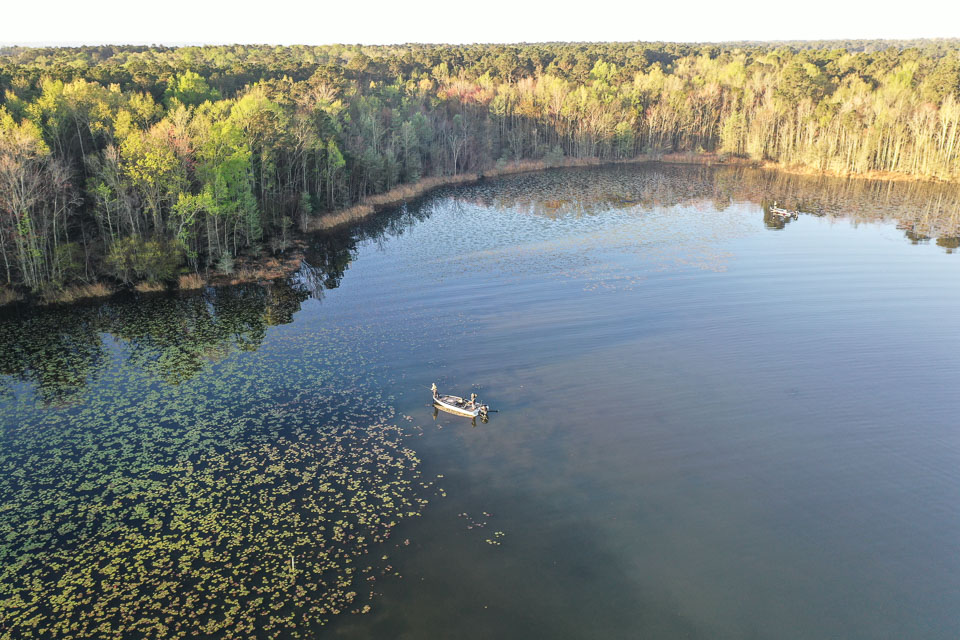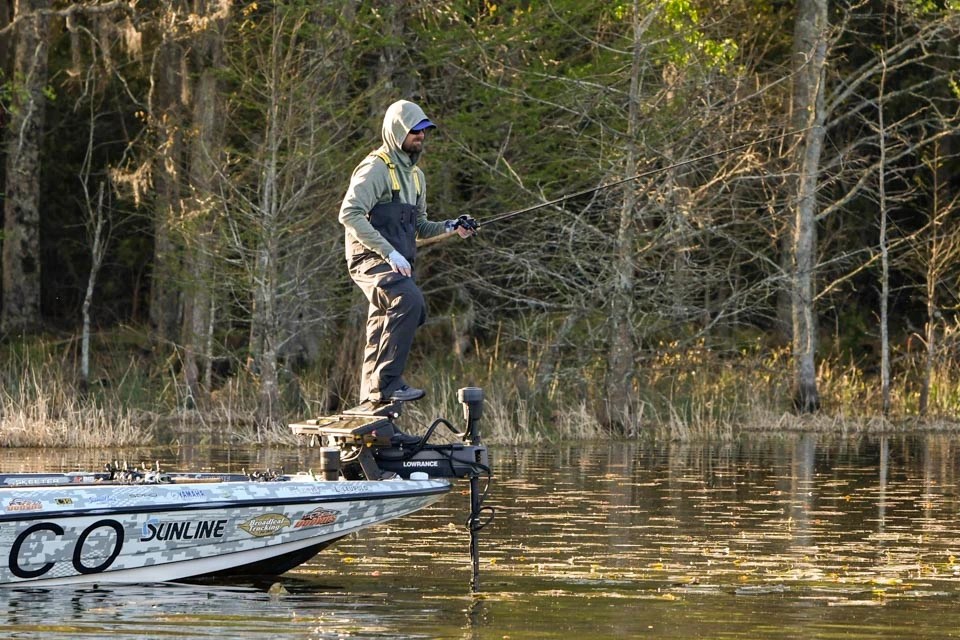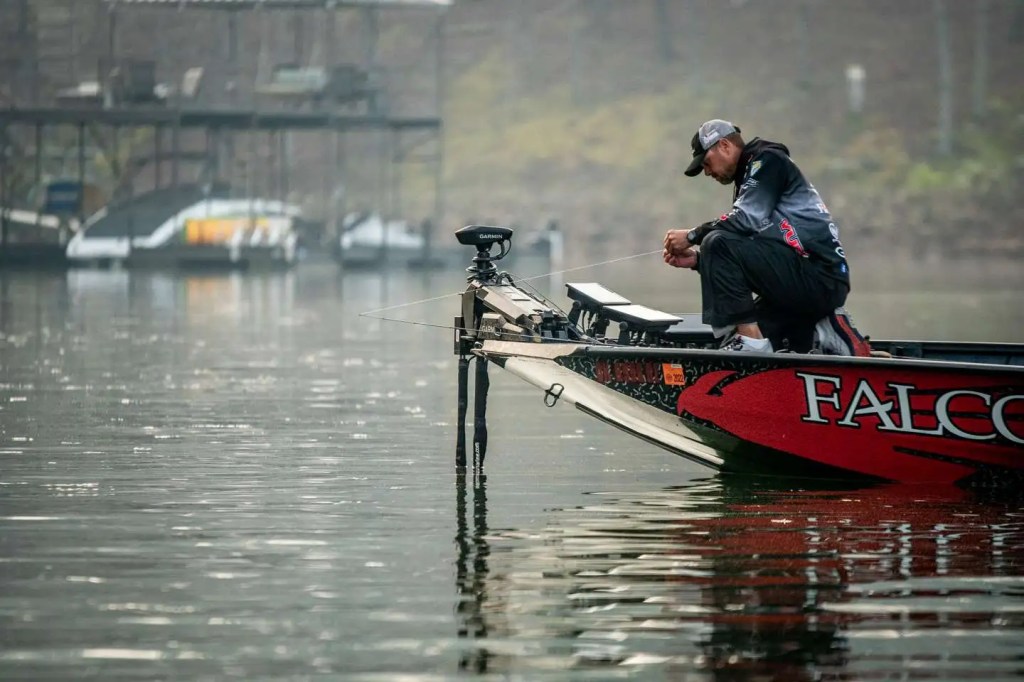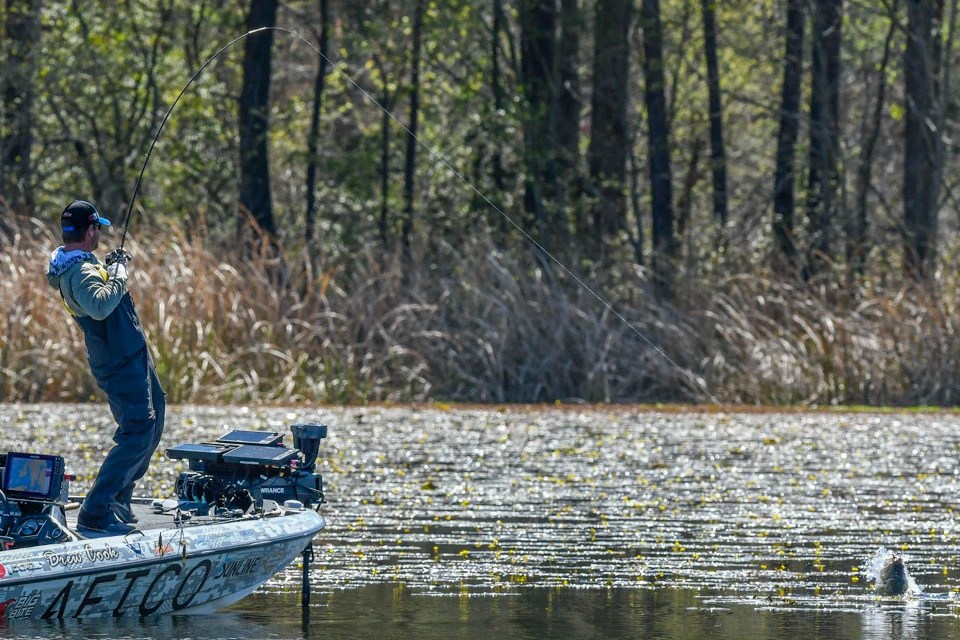
Spring fishing can feel like trying to find a friend or relative during rush hour traffic. As opposed to midmorning or dinner time, when most of the daily travel subsides and folks settle into predictable patterns and locations, it’s easy to miss someone during the frantic buzz of activity.
Translate that into fishing the year’s second quarter and seeking fish on both sides of the spawn can find you running up and down the highway in desperate hope of passing the ones you seek — or, you can play smart and stake out the likely routes. Sure, fish don’t utilize highway exits or particular streets, but their springtime march to and from the spawning grounds is not so dissimilar.
“You want fresh ones coming to you,” said 2022 Bassmaster Classic champion Jason Christie. “There are times of the year when there’s nothing moving, like summertime and wintertime. What’s out there to find is found during practice.
“During springtime, you want to try to guess where these fish are going, so you may go through a place on Monday and then you come back on Tuesday and there’s just as many, or more. Those are typically the kinds of scenarios where guys win events.”

Two-way migration routes
In terms of angler objective, Christie said pre and postspawn is all the same. Fish are on the move. You are trying to figure out where the fish are going to end up, and what route they’re traveling.
Drew Cook, who claimed his first Bassmaster Elite Series trophy in an April event on Santee-Cooper Lakes, recognizes this principle’s broad applicability, and he said tournament competition highlights the core truth.
“The reason why it’s important is we’re fishing multiday tournaments, so you have to have fish moving into an area to be able to win,” Cook said. “Very rarely do you win (solely) with resident fish.
“Sometimes, that does happen on, like, a Red River backwater that has no pressure. Most of the time, you have to have fish coming to you. This time of year, especially, is when you find the fish moving, whether they’re moving up to spawn, moving from the spawn and out to deeper water, out to a shad spawn — there’s a lot of moving going on right now.”

Cover water thoroughly
Early in the season, when Christie believes most of the lake’s fish have not spawned, he’ll position himself ahead of the wave and incrementally expand until he finds them.
“I’ll mostly go right to where I think they’ll end up — where I think they’ll spawn — and work out,” Christie said. “It’s just efficiency.”
When later spring finds fish in multiple stages, it’s all about catching them “coming and going.” That’s the dream scenario in which you dial in a key transition spot where you’re sure to intercept fish moving in or out.
“Start on main lake points and work your way back,” Cook said. “Whether they’re coming or going, you’ll run into them. Not every bass on the lake spawns at the same time, so you’ll have prespawn and postspawn fish on the main points.
“Somewhere in between (there and the bank), you’ll find a big group of them. Whenever you can find a place — normally, a secondary point — where you have a mix of those pre and postspawn fish those are the ones you really want to concentrate on because you have them coming to you from both ways.”
To that point, Cook says you want to stay alert — and don’t always assume steady progression.
“Prespawners are more apt to leave you high and dry; they’ll skip a stop,” he said. “If it’s been cold but you’re coming up on a moon and it’s getting warm, they may skip a spot with stumps and go right to the bank.
“Postspawners keep it more close to the script. They’re more about food, while prespawners are all about spawning. You could find them wadded up in a prespawn (area) with hundreds of big ones and then next day, they’re gone. They’re swimming to the bank.”

Follow these tactical tips
Anticipation and preparation: Cook said a level head and steady nerves are essential for managing spring’s dynamic nature. To avoid getting overwhelmed, he closely monitors weather patterns and lunar phases — current and upcoming.
“For example, during practice for (last year’s) Santee Cooper event, I had two (bed) fish to catch,” Cook said. “But looking at the (warming) weather, I knew they were coming. Looking at weather, moon phase and any water fluctuation will ease your mind.
“Knowing what’s going to happen is more important than what you did in practice.”
Change with the fish: Christie knows the spring search requires moving baits, so he’ll mix it up with a Norman Speed N, a 1/2-ounce BOOYAH Covert spinnerbait, a Heddon One Knocker Zara Spook and a Smithwick Suspending Rogue. For targeting specific cover, he’ll flip a War Eagle Jiu Jigsu Jig.
“Those moving baits can tell me a lot about how far out from the cover the fish are,” Christie said. “A lot of that can change within a day. In the morning, you could be catching them on a squarebill off the bank, and then by the end of the day, you’re up there with a spinnerbait or a spook, or you’re up there flipping cover.
“If I throw squarebill and a fish hits it right on the bank, I know that I can probably catch that same fish on a spinnerbait or a bladed jig. But if I if they’re hitting way out, maybe I need to lean more towards a jerkbait.”
Christie also likes a BOOYAH Pad Crasher frog for prespawners, but he knows the bite develops with time.
“When they first get up, it’s not as aggressive of a bite,” Christie said. “The longer they’ve been up there and establish their personal space, the more aggressive they are.”
Color code: Noting one of the most reliable seasonal indicators, Christie said the big tell for him is springtime fish color.
“If I go down a stretch of grass and the fish area all white, I know they’re new fish that are coming out of deep water,” he said. “That can happen at any time (in the prespawn), so I’m not scared to fish the same stretches again later in practice.
“I might get two bites on Monday, but there’s something about the spot that I like. If I fish it again on Wednesday, and I get eight bites, I know they’re coming to me.
And vice versa, says Christie.
“If I get 10 bites on Monday, but Wednesday I only get two, they’re going away.”
Micro level: While the pre or postspawn search largely implies a broad search, Christie tightens the focus to specific structure: specifically, docks with significant depth variances from outer end to the shoreline. Case in point — the 2022 Bassmaster Classic.
“I was flipping docks, and in practice I caught them out on the end of the docks. During the event, they moved up to the walkways,” Christie said. “I was able to fish some of the same docks, but also fish new stuff because we got some warmer water, and the big were fish moving in.
“And it can be opposite. Say, it’s been warm and all of a sudden we get two or three days of cold front conditions. A guy that’s fishing the outside of the docks might find those fish pulling back to him.”
Bottom line: It doesn’t matter if they’re coming or going, as long as they’re moving to you.





